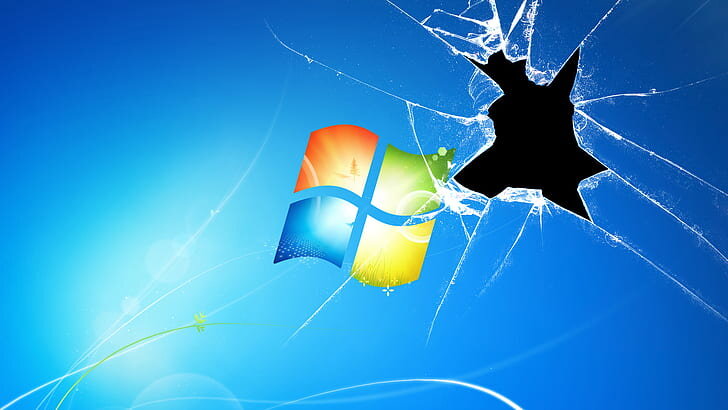Helping Small Businesses with Technical Support - One Day at a Time
A case study on expert IT support. We repaired a broken POS computer in under an hour, and got our clients back online and helping their customers. We bring that kind of expertise and value to our clients every day.
Yesterday I got an urgent call from one of my small business clients in Portland, Oregon.
They had a Windows computer that failed and had entered recovery mode. That means it wouldn’t boot and they couldn’t use the machine - a huge problem because this was a counter computer that helped run their point-of-sale (POS) software. They needed this thing up to ring in their sales! Yikes!
So when I arrived, I used a couple of tools to try to diagnose and repair the system.
I popped in to a command prompt and issued a few commands to check and repair its system files, to check the disk and repair it, and to fix the master boot record of the machine.
I then powered the system down and turned it back on. It then mounted its disk and launched the o/s. We got back in to the desktop and could start ringing up customers.
Huzzah!
Now, the machine was under a professional warranty and could have been repaired by the OEM by dispatching a technician, have them wipe the machine, reinstall its operating system, drives, and applications; a process that could have taken a few days. Ich - a few days!
Myself, that fix took about an hour.
Why?
Because I knew how to run these steps because of experience.
I’ve got 30+ years of experience with microcomputers … experience that goes beyond knowing what buttons to push during a recovery process. It’s this experience that I bring to every engagement that helps reduce time and extend value to my clients, to get them back and running as quickly as possible without having to wait for a traditional support process which may be well-intentioned yet time-consuming.
If you’d like that kind of IT support for your small business, please give me a ring!
R
How to Add Linux Software to a Chromebook
Want to easily add Linux apps to your Chromebook? Here’s a quick couple of steps to get Gnome installed so you can use its application catalog to easily install Linux apps.
First, you’ll want to make sure that your Chromebook/Chromebox can support the Linux shell.
Next, you’ll want to enable the Linux Shell (beta) on your Chromebook. Through enabling this feature, you’re installing a virtual machine running each application within it’s own private sandbox.
You should allocate a minimum of 5GB of drive space to your new VM; options for the VM can be managed within Chrome OS Settings.
Then we’ll perform a number of technical steps to update the repository keys used by the Crostini Project.
From your Chrome OS start, open terminal, and run:
sudo apt-key adv --refresh-keys --keyserver keyserver.ubuntu.com
Now we’re going to do package updates:
sudo apt update && sudo apt upgrade
Now, after all this, you’re ready to install apps by command line within terminal. Those applications would then appear in Chrome OS Start, Software.
However, some users may want to use a graphic user interface to browse and install Linux software. So let’s install Gnome with this command within terminal:
sudo apt-get install gnome-software gnome-packagekit -y
After Gnome is installed, close terminal and entirely reboot your Chromebook. Once it’s back up, go back into terminal and execute:
sudo apt-get upgrade -y
You’re almost done. Complete another reboot and return to Chrome OS to access it’s start then Software app. Be patient - your Linux VM is spinning up to present Gnome to you.
And from here, you can navigate with a GUI to find applications, install them, remove them, and run them via the Software section of Chrome OS.
Remember that there’s a performance hit for running these applications within the VM. You’ll want to open Linux applications sparingly, especially if you’re running on a lesser processor and have limited RAM.
Microsoft is the Problem, Not the Solution
Microsoft has a proven track record of failure: updates prone to harm systems, vulnerabilities that allow ransomware to exist, unacceptable online compromises and downtime … nobody can trust Microsoft products in their small business.
On Wednesday July 15, 2020 - across the world - millions of Microsoft customers went to open Outlook and it crashed. Completely. Users couldn’t access their email using their Windows computer at all - not unless they bypassed Outlook and went online to use a web-based version of Outlook.
Microsoft eventually posted a server-side fix for the issue, rolling it out around noon PST. This is to say that millions of people - on tax day in the United States, no less - lost nearly a day’s worth of productivity.
And Microsoft just shrugged.
In February 2020, Microsoft released security updates that deleted the private data of Windows users. This came on the heels of over four years of disruptive updates that spoiled industry confidence and forced Microsoft to try and explain themselves; even an ex-Microsoft employee described the quality control problems at Microsoft as being systemic.
And Microsoft just shrugged.
So how about - in January 2019 - when Microsoft Office365 was down for two whole days?
Yeah, Microsoft just shrugged.
Meanwhile, Microsoft’s Office 365 security is equally questionable. In 2020 alone, to date:
January 2020. Hackers use malicious apps to gain access to Office 365.
April 2020. An alert from US-CERT describing the vulnerability of millions of MsO365 users; more than one million compromised accounts per month.
May 2020. A hacking threat to Microsoft Teams was announced, threatening another 75 million users.
Microsoft just shrugged.
And finally, ransomware is a significant issue: attacks by aggressors who extort users by encrypting their data. Yet, Microsoft’s mediocre quality control is responsible for the most prominent malware of 2018-2020:
Cryptolocker. It exploits a vulnerability in the Windows platform.
Wannacry. It exploits a vulnerability in the Windows platform.
Cryptowall. It exploits a vulnerability in the Windows platform.
Locky. It exploits a vulnerability in Microsoft Word.
Petya. It exploits the file system of Windows.
Microsoft just shrugs.
One could ascertain that the problem is that Microsoft doesn’t give a hoot about its customers.
Others might suggest that Microsoft looks at systemic vulnerabilities as a marketing opportunity to convince users to upgrade or replace their computer systems.
Yet others could criticize Microsoft’s shoddy quality control.
Whatever the reason, Microsoft is chiefly responsible for the lack of security, quality, and confidence in their products and services.
It’s Microsoft’s inattention to these matters that put small businesses and their data at risk. Our computing platforms should be ever more resilient, more reliable, and more secure - every year - but Microsoft’s solutions prove the inverse.
It is my opinion that it would behoove any small business to seriously consider in what ways they could minimize the use of Microsoft’s products within their control.
And here’s the great news: there’s a ton of other options for small business that doesn’t involve Microsoft solutions. Ask me how.
Related Links:
2021.03.17. Microsoft Releases Emergency Patches to Allow Users to Print.
2021.03.06. Exchange Server Hack Morphs Into a Global Crisis.
2021.01.14. A Single Icon on your Desktop Can Corrupt Win10’s File System.
2020.12.24. Hackers Accessed Microsoft Cloud Customers Info Through 3rd Party.
2020.12.17. Microsoft 365 Was Hacked; The Government was Compromised.
2020.12.11. New Malware Can Infect 30,000 Windows Machines a Day.
2020.10.21. Windows 10 emergency update: US government just issued warning
2020.10.19. Disastrous Windows 10 update is reportedly breaking some PCs
2020.09.23. Windows Updates Appear to be Broken Again
2020.09.19. Homeland Security Urges Immediate Patching Against ZeroLogon Exploit.
2020.09.17. Microsoft 360 MFA is insecure and has been for years; fix coming in April 2021.
2020.09.05. .NET Used by Malware to Create Excel Docs That Bypass Security Checks.
2020.09.02. Windows Defender Can Be Used to Download Malware.
2020.09.01. New Windows 10 Update Could Leave Users Without an Internet Connection.
2020.08.30. Microsoft Leaves a Windows 10 Active Security Exploit Unfixed for 2 Years.
2020.08.27. Windows 10 Could Kill your SSD.
2020.08.20. Microsoft Makes it Harder to Disable Native AV Software.
2020.08.11. Windows 10 Error is Playing Havoc with User Passwords.
2020.08.07. A Old Microsoft Word Doc and a Zip File Can Hijack a Mac.
2020.08.02. Microsoft Edge is Malware.
2020.07.25. Hackers seizing on trust placed in popular Microsoft Office software.
2020.07.27. Opening and closing your laptop could be enough to crash Windows 10.
2013.07.11. Microsoft collaborated with NSA to allow access to email servers without warrant.





